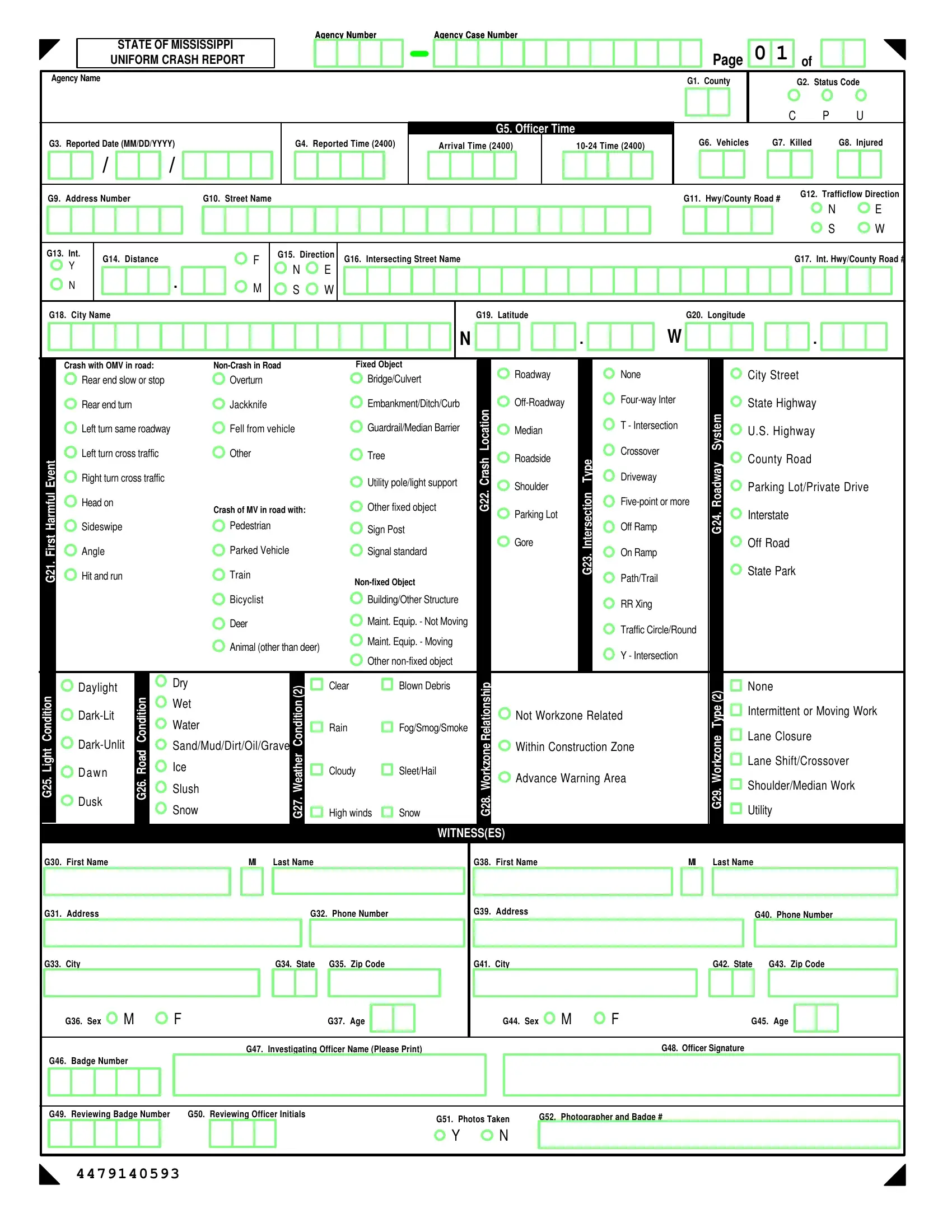Completing the Mississippi Accident Report Form accurately is crucial for providing a reliable record of traffic incidents, which helps in legal proceedings and insurance claims.
1. Record Basic Information
Begin by filling out basic information such as the agency name, county, and city where the accident occurred. Getting these details right is important as they establish the jurisdiction and are crucial for data tracking.
2. Detail the Accident Location
Specify the location details of the accident, including street names, highway numbers, and any nearby landmarks. Accurate location data helps understand the accident's context and potential contributing factors related to the environment or road layout.
3. Enter Accident Timing and Conditions
Document the date and time of the accident, along with light and road conditions. This information is vital for analyzing the accident circumstances, such as visibility issues or road surface problems that could have contributed to the incident.
4. Describe the Crash
Use the section provided to describe the crash configuration and the first harmful event. Include details about the accident, the direction each vehicle traveled, and the initial point of impact.
5. Vehicle and Driver Information
For each vehicle involved, fill out detailed information, including make, model, year, and registration state. Also, record comprehensive driver information, such as name, address, and driver's license details, to ensure all parties involved are properly documented.
6. Record Injury and Damage Details
Note any injuries and the extent of vehicle damage. This section should capture the severity of the accident, including physical harm to individuals and property damage.
7. Work Zone Information
If the accident occurred in or near a work zone, specify this and the type of work zone. This detail is important for assessing risk factors associated with construction or maintenance areas that might affect road safety.
8. Review and Sign Off
Once all sections are completed, review the information for accuracy and completeness. The officer in charge should then sign the form to verify that all details are correctly recorded.

